20 Historical Facts That'll Change The Way You Think About Food
To paraphrase a line from The Truman Show: "We accept the reality of the food with which we are presented."
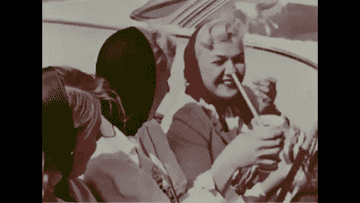
US National Archives / giphy.com
Weird origins, food fads, and curbing masturbation (stay with me). We may not think about the history behind our food too often, but even the most common snacks can have surprising roots.
These 20 historical facts about the foods you think you know might just change some of your tastes!
1.Pasta is not Italian (at least not originally).
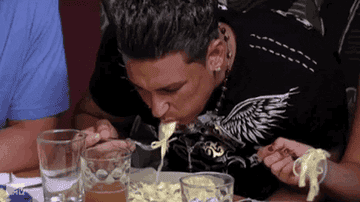
MTV / giphy.com
Pasta is actually the descendant of Asian noodles, and a popular theory is that Marco Polo brought the food to Italy.
But this claim is unlikely since noodles were already getting popular in the area by the time Polo got to Italy. It's more likely that nomadic Arabs brought pasta west, out of Asia and into Italy.
But the Italians did refine the food and make their own. And it's really not so crazy that pasta didn't originate in Italy, since nearly every country has its own spin on the dish. There's spaetzle for Germans, orzo for Greeks, and kreplach dumplings for Ashkenazi Jewish people, just to name a few.
2.Many countries rejected using forks when they were first invented, seeing them as excessive, unnecessary, and "too feminine."
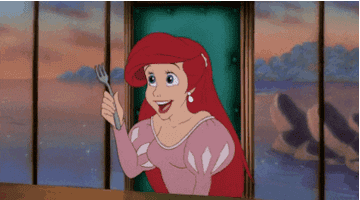
Disney / giphy.com
The Roman Catholic Church even spoke out against forks, stating that God already gifted us with the perfect eating utensils: our fingers.
On top of that, the British called it a "feminine affectation," and the material of forks wasn't yet perfected. Lead forks caused health issues, and steel forks rusted easily and affected the food's taste. But we got there eventually.
3.Table manners as we know them today started in the Renaissance.
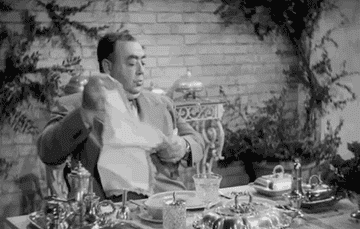
TCM / giphy.com
Some form or another of dining etiquette dates back to the Greeks, but table manners as we know them today was led by the Italian Renaissance.
Here are a few rules that were invented around the 17th century (toward the end of the Renaissance):
—"In good society one does not put both hands into the dish. It is most refined to use only three fingers of the hand. Forks scarcely exist, or at most for taking meat from the dish." (There's that fork taboo again).
—[On farting during a meal] "If it is possible to withdraw, it should be done alone. But if not, in accordance with the ancient proverb, let a cough hide the sound."
—"It is boorish to redip half-eaten bread into the soup." (Double-dipping was bad manners even 400 years ago.)
4.Almost all of the chickens we eat today can be traced back to the 1948 "Chicken of Tomorrow" contest that sought to find the perfect chicken for consumers.
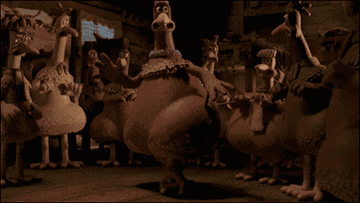
DreamWorks / giphy.com
It all started with Howard C. Pierce, the poultry research director for A&P grocery stores. He had the idea to create the perfect chicken — one with a turkey-like breast that could feed the whole family — using cross-breeding.
But Pierce's idea wasn't to create the chicken himself. He and A&P created the "Chicken of Tomorrow" contest, which turned into a national, three-year effort.
The winner of the contest was Charles Vantress, who had crossed a New Hampshire chicken with a version of the Cornish.
Not only did this contest dramatically change chickens as a species, American food consumption, and factory farming; it also meant that each major farm had their own breed of chicken that could not successfully be cross-bred with another farm's chickens.
In a sense, each farm had created their own "brand" of chicken, brands that we're still eating to this day.
5.Oysters get their name from Athenian democracy.
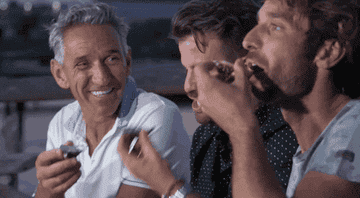
1st Look / giphy.com
We know that to ostracize someone means to shun them, but where does the word come from? In ancient Athens, any citizen could be expelled through a voting process.
Greeks would cast their votes using "ostracon" (also spelled "ostrakon"), which were shards of pottery that served as ballots.
With oyster shells not looking too dissimilar from these ostracon, or pieces of pottery, that's how we get both the words "ostracize" and "oyster" from an ancient Greek practice.
6.The oldest beer recipe in the world dates back nearly 4,000 years ago to 1800 B.C. Mesopotamia. It was translated from stone tablets.
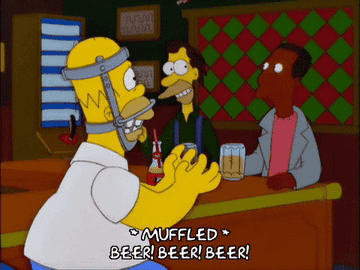
Fox / giphy.com
The Sumerians loved beer so much they even had a goddess of brewing, Ninkasi (whose name is now the label of a modern brewing company).
Though beer dates back 3,900 years, it's still beat by wine, which dates back roughly 8,000 years. But even further back than that, humans were shotgunning a mixture of rice, honey, and hawthorn fruit (not too dissimilar from mead) 9,000 years ago.
7.J. H. Kellogg's corn flakes were intentionally made to be bland. Though the corn flakes were intended to be a healthy breakfast option, Kellogg also believed that bland food was one way to prevent masturbation, which he considered "the worst evil one could commit."
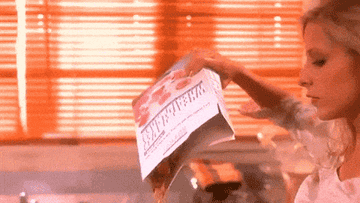
Fox / giphy.com
Many have said that "Kellogg invented cereal to stop masturbation," but this isn't entirely true. Kellogg truly did believe in the health benefits of his corn flakes.
Still, Kellogg was indeed extremely anti-self-pleasure, believing that it could cause "cancer of the womb, urinary diseases, nocturnal emissions, impotence, epilepsy, insanity, and mental and physical debility."
He believed a bland diet in general was a good way to avoid excitement and stimulation, which could lead to masturbation. He never specifically referred to cereal as curbing that "ultimate sin," but he still probably wouldn't be thrilled to see the gif above.
8.Pringles are called "crisps" by the company, but not because they're British. The FDA has officially stated the snack doesn't qualify as a "potato chip" since it doesn't actually contain potato.
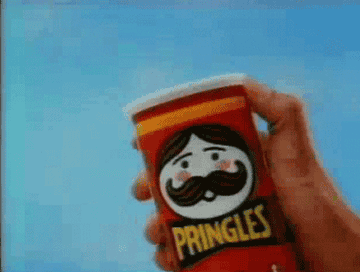
Pringles / giphy.com
Another crazy Pringles fact is that their iconic saddle shape was created using early supercomputers. The shape (a truncated hyperbolic paraboloid) is incredibly aerodynamic, sharing many similarities with modern aircrafts.
They're also great for stacking.
9.Charles Doolin bought the recipe for Fritos (fried masa) from Gustavo Olguin for $100 that he borrowed from his mother.

Frito-Lay / giphy.com
Doolin's mother, Daisy Dean Stephenson Doolin, sold her wedding ring to come up with the cash. Daisy also helped Charles manufacture the chips in her kitchen and even came up with the Frito pie recipe!
10.Toll House chocolate cookies truly are the original chocolate chip cookie. They were invented by Ruth Wakefield, who simultaneously invented chocolate chips.
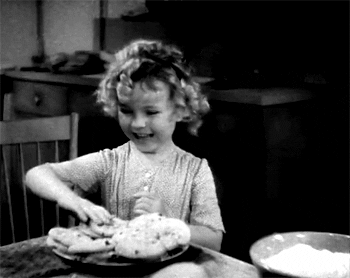
Fox / giphy.com
We all know Nestlé Toll House cookies, but "Toll House" is a completely separate entity from the mega-corporation Nestlé.
It started as Toll House Inn, owned by Ruth Wakefield. She wanted to serve her patrons something new, so she chopped up a Nestlé semi-sweet chocolate bar and added the chunks into her cookie dough.
The cookie was an instant hit, and Wakefield quickly struck a deal with Nestlé, who paid her for her recipe with a lifetime supply of their chocolate for the Toll House Inn.
Nestlé soon realized it made more sense to pre-chop the chocolate rather than having bakers do it themselves, and the chocolate chip as we know it today came shortly after.
11.Tootsie Rolls are so resilient that they were included as military rations for soldiers in WWII. And during a miscommunication in the Korean War, pallets of Tootsie Rolls were airdropped to Marines instead of ammunition.
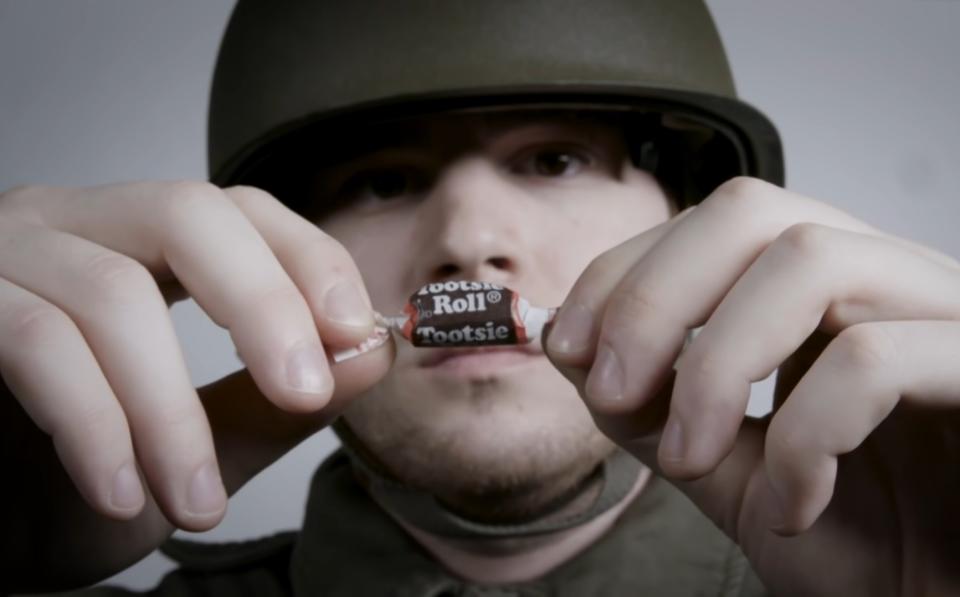
The First Marine Division at Chosin Mountain requested 60mm mortar ammo, the radio codename for which was "Tootsie Rolls." The radio operator didn't know what the code was for, so he put in a call for the chewy chocolate candy.
But even though it was actual Tootsie Rolls that were air-dropped to the Marines, they still found uses for them. The rest of their food had frozen in the cold temperatures, so even though the treats were small, they were welcome.
Additionally, warmed Tootsie Rolls could plug bullet holes and seal cracked fuel lines.
12.We call them chili and bell "peppers" because pepper (the spice) was the main frame of reference Europeans had for hot food when Columbus brought the veggies back from the New World.
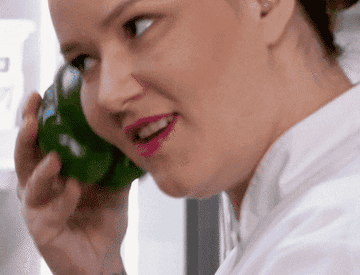
CBC / giphy.com
Europeans at the time had never seen peppers before (they're native to Mexico and Central America), but they knew one thing: They were hot. And anything spicy at the time was called "peppery," so the vegetables became chili, banana, and bell peppers.
13.What do Alexander the Great, Cleopatra, and childbirth rituals have in common? Saffron.

Saffron may not seem like a luxury spice these days (even though it's typically more expensive than your average spices), but in ancient times, it was highly sought after.
Alexander the Great bathed in saffron to heal his wounds, and Cleopatra did the same, though she did it to increase sexual pleasure. Saffron has also been used in India for thousands of years in childbirth rituals, and is still used to this day.
14.Horn & Hardart’s Automats were essentially massive vending machines with kitchens behind the scenes constantly replacing the hot food. These automats were popular during the Great Depression, but couldn't compete with modern fast food.
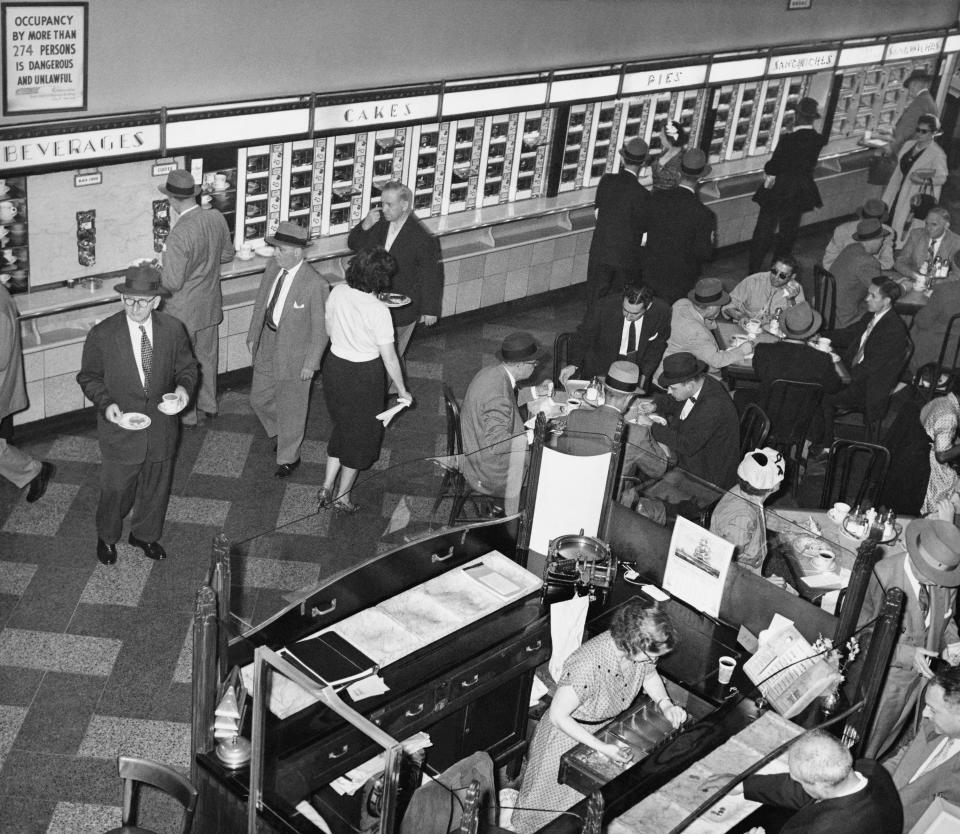
Behind the rows of pay-to-open food containers, you'd find hot meals like pie, baked beans, chicken, and macaroni and cheese.
The automat style of restaurant was inspired by European restaurants of the time, and Americans didn't initially like how impersonal it made their dining experience. But after the stock market crashed, the cheap food and speedy delivery system proved to be just what everyone needed during lean years.
Horn & Hardart’s Automats revolutionized fast food in America, but it was ironically the rise of the fast food industry as we know it today that caused them to eventually shut down.
15.Drinking straws were invented 5,000 years ago by the Sumerians so they could drink their beer more easily.
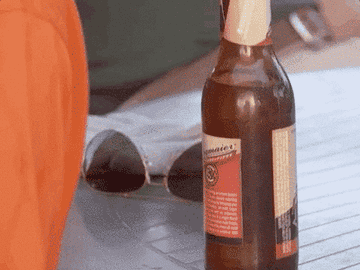
Peacock / giphy.com
When you brewed beer in ancient Mesopotamia, you could wind up with some gnarly sludge at the bottom of your mug that doesn't taste too good. But sip from a straw and that fermentation byproduct is much easier to get around.
16.Croissants are Austrian, not French.
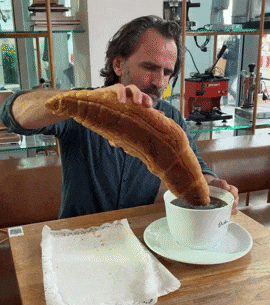
Dritan Alsela Coffee / giphy.com
Before it was the high-and-mighty croissant, it was but the humble Austrian kipferl. The kipferl, which dates back to the 13th century, is essentially a bread roll — it doesn't even have the flakes that croissants later came to be known for. It does, however, have the iconic crescent shape.
Even when the kipferl was turned into the modern-day, flaky croissant in the 19th century, this did not take place in France. It was still in Austria.
The first French croissant recipe pops up in the early 20th century, well after Austria had created it.
17.Fish and chips come from Spanish and Portuguese Jewish people, not the British.

Mississippi Board of Tourism / giphy.com
Just like the kipferl predated the croissant, pescado frito walked so that fish and chips could run. Spanish and Portuguese Jewish immigrants introduced fried fish (prepared in a similar way to pescado frito) to the UK, and working class Brits quickly fell in love with the food.
18.Hardtack has been a staple of many soldier's diets for roughly 10,000 years.
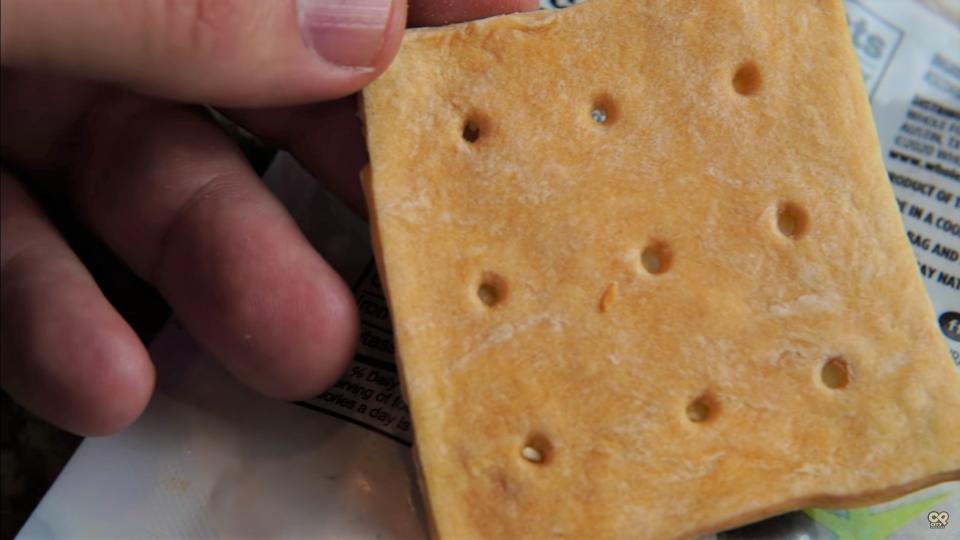
Egyptian sailors, Roman legions, the knights of the Crusades, the Royal Navy of the 16th century, American Civil War soldiers, and many more who have been sent off to battle have carried hardtack.
It's gone by many different names, but the recipe is always the same: flour, water, and salt. The ingredients are mixed into a dough, formed into cracker shapes, poked with holes, and baked for about 30 minutes on each side. This causes nearly all the moisture to be sucked from the cracker, resulting in an extremely hard and long-lasting food (around 25 years).
Soldiers have come up with clever ways to eat the notoriously hard-on-the-teeth food throughout history. They've mashed the hardtack with rifle butts, mixed it with extra water and fried the mush to create pancakes, and soaked it in coffee.
Hardtack went out of fashion after WWI with the rise of canned food, but it's still used in some militaries around the world today.
19.Momofuku Ando invented instant ramen noodles as a cheap and simple food for those in need in post-WWII Japan.
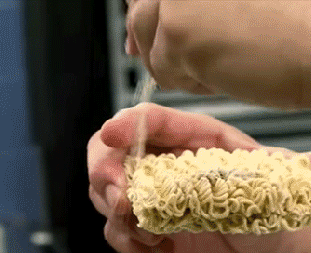
Mind of a Chef / giphy.com
Ando didn't perfect his recipe until after Japan's economy had bounced back, but his creation was still a hit.
20.Beer started civilization (maybe).
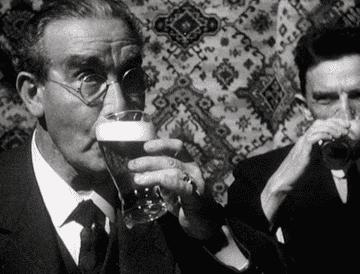
Sound & Vision / giphy.com
This last one is more of a theory than a fact. Some experts, such as author, beer scientist, and former president of the Institute of Brewing and Distilling Charlie Bamforth, believe that civilization started when tribes of people started settling around their grain rather than chasing animals across continents.
As Bamforth puts it:
"Beer is the basis of modern static civilization. Because before beer was discovered, people used to wander around and follow goats from place to place. And then, they realized that this grain [barley] could be grown and sprouted and made into a bread and crumbled and converted into a liquid which gave a nice, warm, cozy feeling. So, gone were the days that they followed goats around. They stayed put while the grain grew and while the beer was brewed. And they made villages out of their tents. And those villages became towns, and those towns became cities. And so, here we are in New York, thanks to beer."

